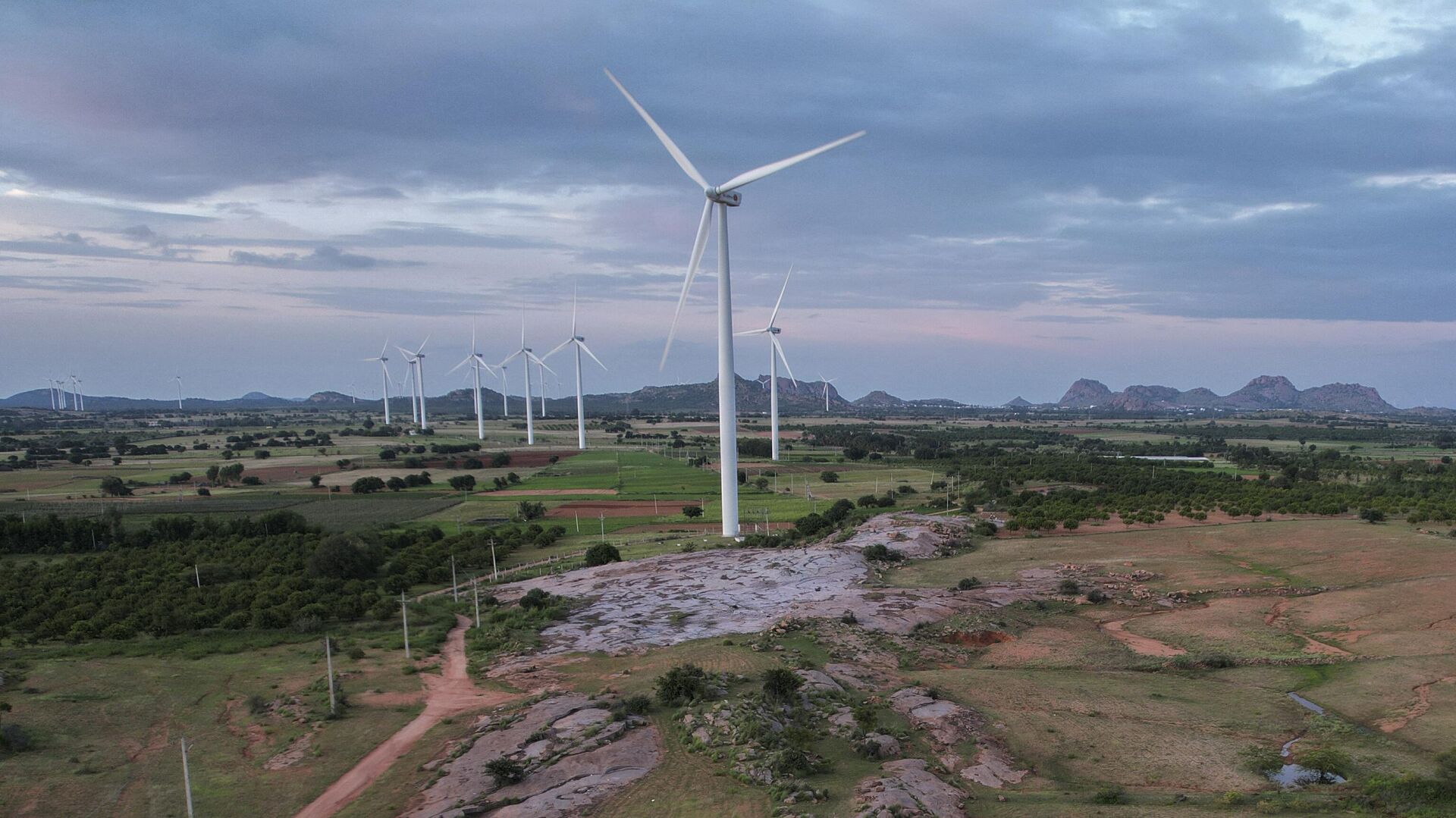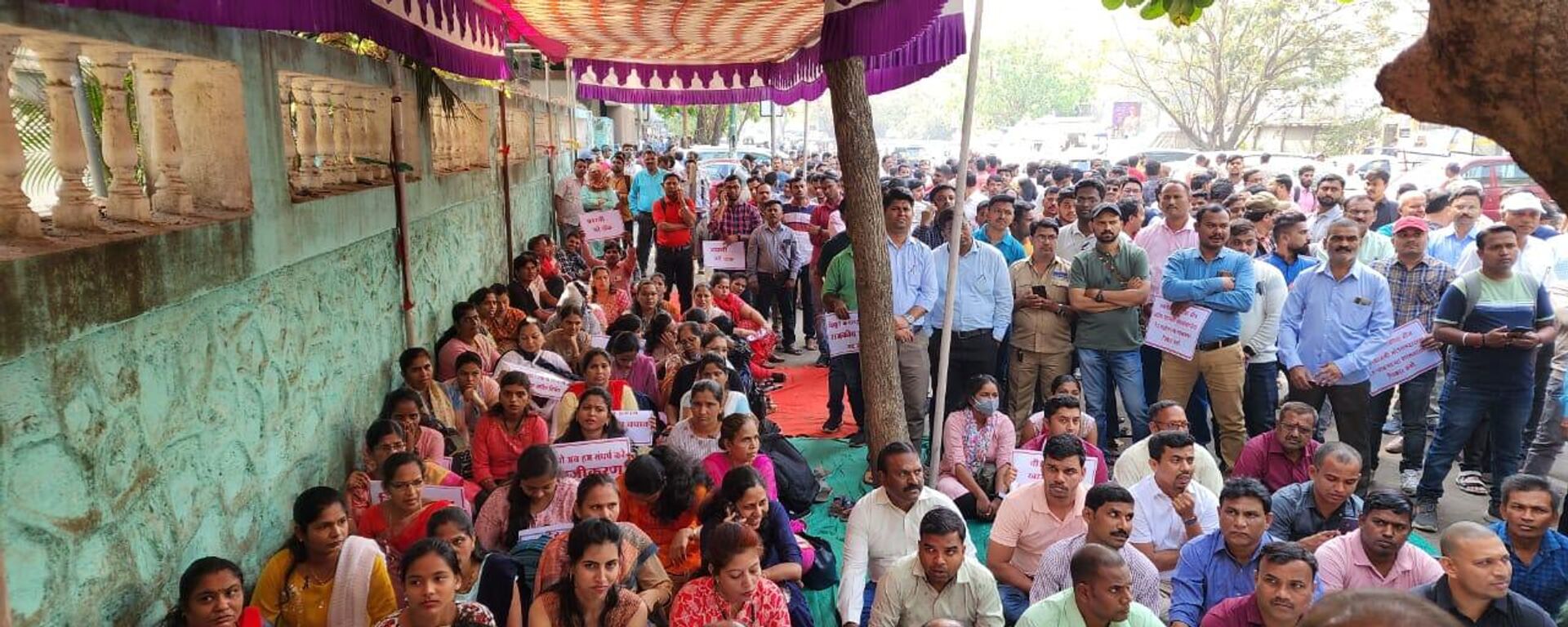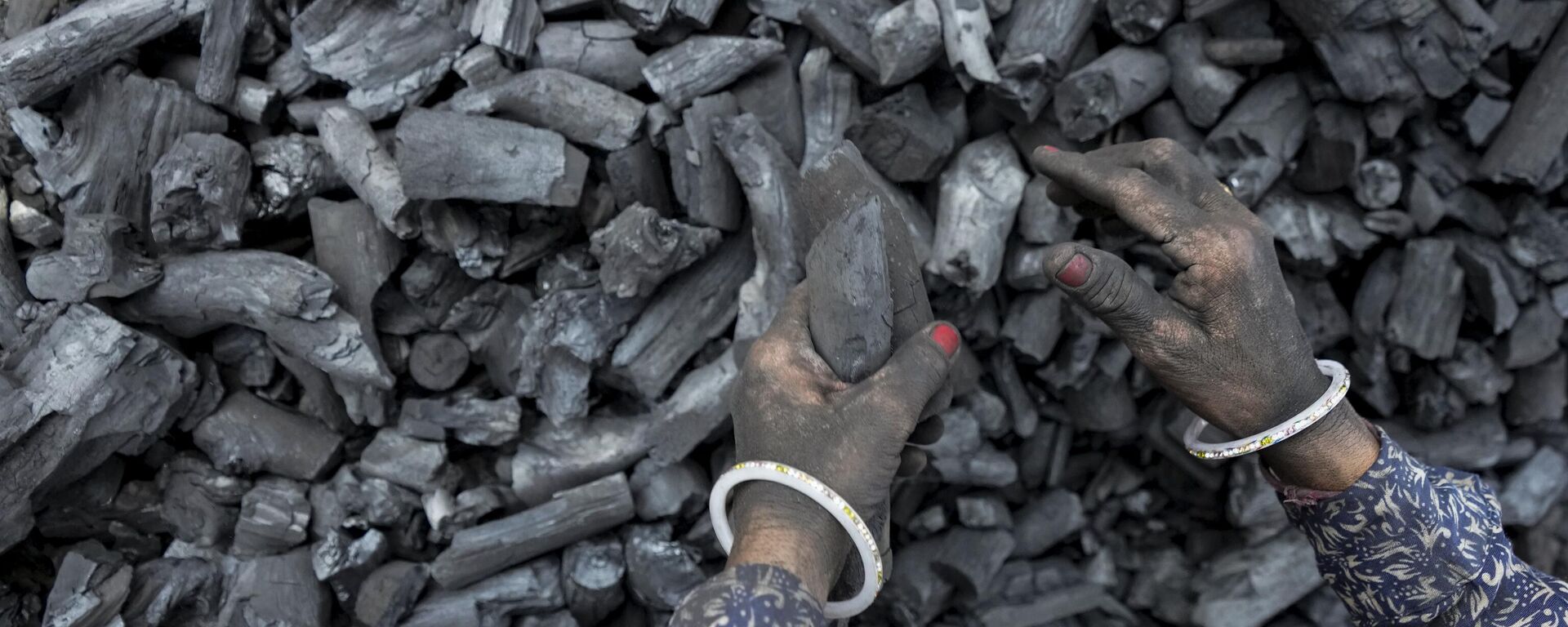https://sputniknews.in/20230709/global-south-has-to-create-space-for-itself-in-clean-energy-says-wri-expert-2868712.html
Global South Has To Create Space For Itself In Clean Energy, Says WRI Expert
Global South Has To Create Space For Itself In Clean Energy, Says WRI Expert
Sputnik India
Over the past many years, developing nations have sought clean energy transition funds from the global North. The developing nations include countries in Africa, Latin America, small islands developing states (SIDS) and the South East Asia region.
2023-07-09T08:08+0530
2023-07-09T08:08+0530
2023-07-09T08:08+0530
india
renewable energy
climate change
sputnik exclusives
global south
europe
south asia
https://cdn1.img.sputniknews.in/img/07e6/0c/1c/276515_0:161:3071:1888_1920x0_80_0_0_7dc7aa51408ebf75a4f409076200a9d4.jpg
Tirthankar Mandal, Head of Energy Policy at the Energy Program at the World Resources Institute in India, spoke with Sputnik about universal green energy access.Over the past years, developing nations - namely countries in Africa, Latin America, small islands developing states (SIDS) and the South-east Asia region - have looked for funds from the Global North to transition to clean energy. The term "green power" typically refers to electricity generated from renewable energy sources such as solar, wind, hydro, geothermal, and biomass.These energy sources are thought to have a minimal environmental effect compared with traditional fossil fuels, as they produce fewer greenhouse gas emissions and are believed to help tackle climate change.Excerpts from the Interview:Sputnik: Why is Universal for Green Access Power important for India in 2023?Tirthankar Mandal: Renewable demands have been increasing over the past four to five years. So far, renewable is mostly about solar, wind, and a little bit of hydro.In India, the cost of renewable energy is falling.Although in a 24/7 context, cost parity between traditional and renewables has yet to be achieved. However, the landed cost (which is what consumers pay and includes all the charges) of thermal and fossil fuel anywhere in India, is at least INR 6-7 per unit, and renewable is INR 8-9 on a 24/7 scale. Also, at present, fossil fuel-based electricity has huge subsidies that are not the same as renewables.Speaking policy-wise, in recent years, India has taken many bold steps which show its zeal towards adopting renewables, including its 2070 carbon neutrality aim and an ambitious target of achieving renewable 450GW by 2030. Personally speaking, the 2030 target is very important to me. Because we have yet to learn about the 2070 roadmap, but in the next few years it will be quite clear how the government is dedicated to achieving carbon neutrality. Also because India has set the target to achieve 50GW of renewables each year starting this year according to government order.Also, India is hosting the G20 in 2023.India is also leading the International Solar Alliance (ISA) consortium, which gives support to Small Islands, Latin American, and African nations. So if you put all these things together, I would say 2023 is a watershed year for India.Sputnik: The West has been hypocritical regarding green energy. Over the centuries, today's wealthy nations have grown mainly by using non-green fuels such as coal. But they are now putting pressure on developing nations to switch to green technologies as soon as possible. How can India move toward a green economy without significant economic losses?Tirthankar Mandal: I see this differently, let's put it this way. Let's suppose we have a cake and the person who will take the first piece gets a bigger and better piece. It's the same in this case: nobody will actually create space to give space for the global South - we have to be practical in these approaches.The countries which suffer are the Global South. Now, the Global North has come up with many terminologies such as the equitable sharing of carbon space and many things that practically don't mean anything to the Global South.Now, Global South has to carve out its alternative model of decentralised and renewable energy-based power. Moreover, what we mean by renewable energy is that its input cost is zero, whereas the technology built up by developed countries, the marginal cost is not zero. So, we have to carve out a developmental pathway with zero input cost. If the Global South can achieve this, developed nations may follow us. Why? This is because we are creating a model for development in which the footprint on nature for energy production is close to minimal because of near-zero input cost.Because even developed countries are now seeing developmental challenges as they're stagnating at some level - their GDP is not growing at the same pace as Asian nations' GDP is growing.So, that is where I see a huge opportunity. But, for the changes, we first need appropriate policies and how we calculate the return of the policies in renewable projects. At present, all renewable projects' output is calculated like the traditional infrastructure projects, and investment in these projects is mostly termed "risky".Sputnik: How does South Asia achieve transition?Tirthankar Mandal: Energy transition is not going to be a linear one. For South Asia and Africa, it will be fossil fuel-driven for the next one or two decades at best, and renewable energy-driven for the next two to three decades. It won't be a drastic phasing out of coal - in fact, I believe we should be talking about phasing in renewable energy rather than phasing out coal.And the market is going to be a decentralized solution for South Asia.Sputnik: As of now, talks about clean energy come from government or industry level. However, people who are most vulnerable are neglected. What should the government's approach be especially in framing policy so that it benefits the general public the most?Tirthankar Mandal: There has to be the government's role in planning how to reach out to people in societies when it comes to energy provision. The people who are most exposed to climate vulnerability should have social coverage, which doesn't have to be only the energy solution perspective but also the social development perspective.And the coverage has to be inclusive not just in social status but gender perspective too - it is not limited to sexual orientation but also for the people who live in coastal areas or extreme geographical locations. Furthermore, these people do not have any power to make decisions and are facing the brunt of every natural calamity. So, I think that is how the future of our climate-induced support mechanism should play out.
https://sputniknews.in/20230623/india-to-raise-nightime-and-cut-daytime-electricity-prices-to-boost-solar-generation-2642152.html
https://sputniknews.in/20230603/indias-coal-demand-to-peak-in-a-decade-if-renewable-targets-not-met-experts-warn-2284412.html
india
global south
europe
south asia
Sputnik India
feedback.hindi@sputniknews.com
+74956456601
MIA „Rossiya Segodnya“
2023
Deexa Khanduri
https://cdn1.img.sputniknews.in/img/07e6/0c/13/138923_52:0:533:481_100x100_80_0_0_cadf23d341691fc65ff2b22fd1afe584.jpg
Deexa Khanduri
https://cdn1.img.sputniknews.in/img/07e6/0c/13/138923_52:0:533:481_100x100_80_0_0_cadf23d341691fc65ff2b22fd1afe584.jpg
News
en_IN
Sputnik India
feedback.hindi@sputniknews.com
+74956456601
MIA „Rossiya Segodnya“
Sputnik India
feedback.hindi@sputniknews.com
+74956456601
MIA „Rossiya Segodnya“
Deexa Khanduri
https://cdn1.img.sputniknews.in/img/07e6/0c/13/138923_52:0:533:481_100x100_80_0_0_cadf23d341691fc65ff2b22fd1afe584.jpg
tithankar mandal, world resources institute, india, universal green energy access, developing nations, clean energy transitions, global north, africa, latin america, small islands developing states, south east asia region, green power, renewable energy, solar, wind, hydro, geothermal, biomass, environmental impact, fossil fuels, greenhouse gas emissions, universal for green power energy, renewables demands, thermal, fossil fuel, fossil fuel-based electricity, 2070 carbon neutrality,
tithankar mandal, world resources institute, india, universal green energy access, developing nations, clean energy transitions, global north, africa, latin america, small islands developing states, south east asia region, green power, renewable energy, solar, wind, hydro, geothermal, biomass, environmental impact, fossil fuels, greenhouse gas emissions, universal for green power energy, renewables demands, thermal, fossil fuel, fossil fuel-based electricity, 2070 carbon neutrality,
Global South Has To Create Space For Itself In Clean Energy, Says WRI Expert
Deexa Khanduri
Sputnik correspondent
The G20 Energy Transition Working Group Committee's meeting recently agreed to reform and adopt the concept of universal access to green energy. It meant ensuring all countries have equitable and affordable access to renewable and sustainable energy.
Tirthankar Mandal, Head of Energy Policy at the Energy Program at the World Resources Institute in India, spoke with Sputnik about universal green energy access.
Over the past years, developing nations - namely countries in Africa, Latin America, small islands developing states (SIDS) and the South-east Asia region - have looked for funds from the Global North to transition to clean energy.
The term
"green power" typically refers to electricity generated from
renewable energy sources such as solar, wind, hydro, geothermal, and biomass.
These energy sources are thought to have a minimal environmental effect compared with traditional fossil fuels, as they produce fewer greenhouse gas emissions and are believed to help tackle
climate change.Excerpts from the Interview:
Sputnik: Why is Universal for Green Access Power important for India in 2023?
Tirthankar Mandal: Renewable demands have been increasing over the past four to five years. So far, renewable is mostly about solar, wind, and a little bit of hydro.
In India, the cost of
renewable energy is falling.
Although in a 24/7 context, cost parity between traditional and renewables has yet to be achieved. However, the landed cost (which is what consumers pay and includes all the charges) of thermal and fossil fuel anywhere in India, is at least INR 6-7 per unit, and renewable is INR 8-9 on a 24/7 scale.
Also, at present, fossil fuel-based electricity has huge subsidies that are not the same as renewables.
Speaking policy-wise, in recent years, India has taken many bold steps which show its zeal towards adopting renewables, including its 2070 carbon neutrality aim and an ambitious target of achieving renewable 450GW by 2030.
Personally speaking, the 2030 target is very important to me. Because we have yet to learn about the 2070 roadmap, but in the next few years it will be quite clear how the government is dedicated to achieving carbon neutrality. Also because India has set the target to achieve 50GW of renewables each year starting this year according to government order.
Also, India is hosting the G20 in 2023.
India is also leading the International Solar Alliance (ISA) consortium, which gives support to Small Islands, Latin American, and African nations. So if you put all these things together, I would say 2023 is a watershed year for India.
Sputnik: The West has been hypocritical regarding green energy. Over the centuries, today's wealthy nations have grown mainly by using non-green fuels such as coal. But they are now putting pressure on developing nations to switch to green technologies as soon as possible. How can India move toward a green economy without significant economic losses?
Tirthankar Mandal: I see this differently, let's put it this way. Let's suppose we have a cake and the person who will take the first piece gets a bigger and better piece. It's the same in this case: nobody will actually create space to give space for the global South - we have to be practical in these approaches.
The countries which suffer are the Global South. Now, the Global North has come up with many terminologies such as the equitable sharing of carbon space and many things that practically don't mean anything to the Global South.
All [the Global South] can ask for is sharing of technologies and financial support and then understanding from those technologies how to create roadmaps for ourselves.
Now, Global South has to carve out its alternative model of decentralised and renewable energy-based power. Moreover, what we mean by renewable energy is that its input cost is zero, whereas the technology built up by developed countries, the marginal cost is not zero.
So, we have to carve out a developmental pathway with zero input cost. If the Global South can achieve this, developed nations may follow us. Why? This is because we are creating a model for development in which the footprint on nature for energy production is close to minimal because of near-zero input cost.
Because even developed countries are now seeing developmental challenges as they're stagnating at some level - their GDP is not growing at the same pace as Asian nations' GDP is growing.
So, that is where I see a huge opportunity. But, for the changes, we first need appropriate policies and how we calculate the return of the policies in renewable projects. At present, all renewable projects' output is calculated like the traditional infrastructure projects, and investment in these projects is mostly termed "risky".
Sputnik: How does South Asia achieve transition?
Tirthankar Mandal: Energy transition is not going to be a linear one. For South Asia and Africa, it will be fossil fuel-driven for the next one or two decades at best, and renewable energy-driven for the next two to three decades.
It won't be a drastic phasing out of coal - in fact, I believe we should be talking about phasing in renewable energy rather than phasing out coal.
And the market is going to be a decentralized solution for South Asia.
Sputnik: As of now, talks about clean energy come from government or industry level. However, people who are most vulnerable are neglected. What should the government's approach be especially in framing policy so that it benefits the general public the most?
Tirthankar Mandal: There has to be the government's role in planning how to reach out to people in societies when it comes to energy provision.
The people who are most exposed to climate vulnerability should have social coverage, which doesn't have to be only the energy solution perspective but also the social development perspective.
And the coverage has to be inclusive not just in social status but gender perspective too - it is not limited to sexual orientation but also for the people who live in coastal areas or extreme geographical locations.
Furthermore, these people do not have any power to make decisions and are facing the brunt of every natural calamity. So, I think that is how the future of our climate-induced support mechanism should play out.




